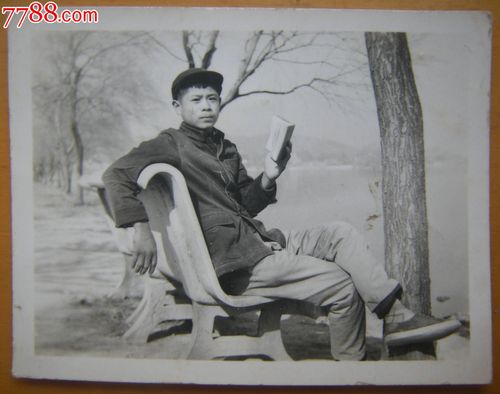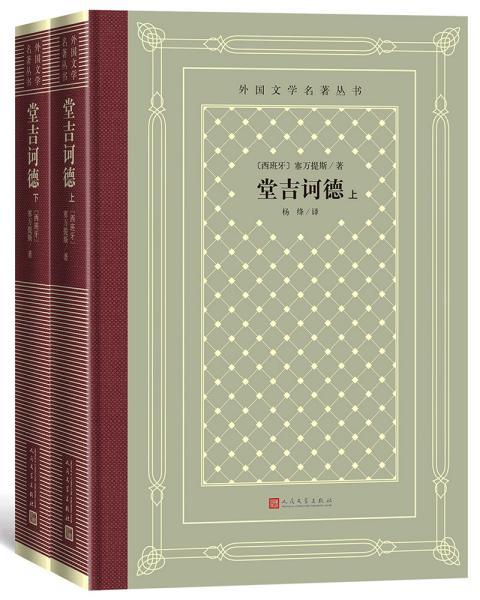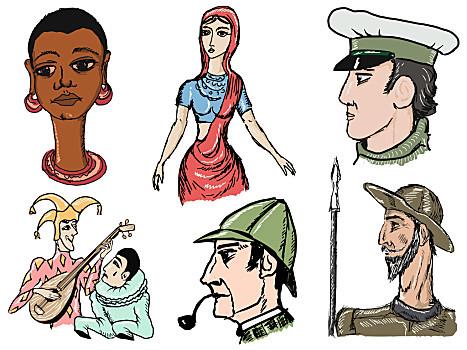不定冠词的基本用法本文简介:不定冠词的基本用法1.用于可数名词的单数形式前,指人或事物的某一类.这是不定冠词的最基本的用法.如:HeisanEnglishteacher.他是位英语老师.(指教师中的一个)Theyarewaitingforabus.他们在等公共汽车.(指任何一辆公共汽车)2.指某人或某物,但不具体说出是何人或何
不定冠词的基本用法本文内容:
不定冠词的基本用法
1.
用于可数名词的单数形式前,指人或事物的某一类.这是不定冠词的最基本的用法.
如:
He
is
an
English
teacher.他是位英语老师.(指教师中的一个)
They
are
waiting
for
a
bus.他们在等公共汽车.(指任何一辆公共汽车)
2.
指某人或某物,但不具体说出是何人或何物.
A
report
wants
to
see
you.
有位记者要见您.
3.
表示数量,有“一“的意思,但数的概念没有one强.
I
have
a
pen
and
two
pencils.
我有一支钢笔和两支铅笔.
4.
在时间,重量,速度,价格等名词前,表示单位数量“每一“.如:
We
have
four
English
lessons
a
week.
我们每周上四节英语课.
He
drives
the
car
at
60
miles
an
hour.
他车速达每小时60英里.
Take
the
medicine
three
times
a
day.
这药每天服用三次.
How
much
is
the
pork
a
pound
一磅猪肉多少钱
How
much
a
meter
is
this
cloth
这块布料每米多少钱
5.
表示“同一“的意思.
They
were
nearly
of
an
age.他们几乎同岁.
The
two
shirts
are
much
of
a
size.
两件衬衫大小差不多.
6.
表示“某一个“,一般与表示星期的名词连用.如:
They
came
on
a
Sunday
and
went
away
on
the
Monday.
他们是一个星期日来的,星期一就走了.
That
happened
on
a
Wednesday
towards
the
end
of
May.
那是发生在近五月底的某个星期三.
7.
在月份,星期及morning,evening,night,afternoon等系词前有修饰性的定语时,一律用不定冠词.例如:
A
cold
March
is
usual
in
the
Northeast.
东北的三月往往是冷的.
On
a
sunny
Saturday
she
went
out.
在一个晴朗的星期五,她出去了.
The
accident
happened
on
a
very
hot
night.
这事故发生在一个非常炎热的晚上.
8.
用在专有名词之前,表示“类别“.例如:
She
is
a
Chinese
now
working
as
an
engineer
in
America.
她是个华人,现在美国当工程师.
A
Mr.
Jones
came
to
see
you
this
morning.
有一个琼斯先生今天上午来了,他想见你.
I
am
going
to
buy
a
Kodak.
我要买一架柯达照相机.
This
is
a
Van
Gogh.这是一幅梵高的画.
9.
与成对的名词连用.例如:
I
bought
a
cup
and
saucer
at
that
shop.
我在那家店里买了一套茶杯.
There
is
a
knife
and
fork
on
the
table.
桌上有一副刀叉.
注意:如不成对,则要分别加不定冠词.如:a
knife
and
a
fork一把刀和一把叉.
10.
用在and连接两个名词之前,如分别加不定冠词,表示“两个人或物“反之,则
表示“一个人或物“.例如:
a
black
and
white
horse
一匹黑白相间的马
a
black
and
a
white
horses
一匹黑马和一匹白马
She
is
a
teacher
and
writer.
她是位教师兼作家.
They
are
a
teacher
and
a
writer.
他们是一位教师和一位作家.
11.
用于“what
a/an+单数可数名词“及“such
a/an+单数可数名词“结构,表示“惊叹“.例如:
What
a
lovely
day!
多好的天啊!
What
an
idea!
好主意!
How
did
you
make
such
a
mistake
你怎么会犯这种错误
I
have
never
seen
such
a
beautiful
lake.
我未曾见过这么美丽的湖.
12.
用于“many
a,quite
a,rather
a+单数可数名词“结构,带有“强调“的意味.例如:
Many
a
young
man
wants
to
speak
English.
许多年轻人想说英语(表示“许多“)
I
ve
been
there
many
a
time.
我到过那儿多次了.(表示“许多“)
He
is
quite
a
good
player.
他是一名相当好的选手.(表示程度)
You
are
quite
a
woman
little
Wang.
你真是个不一般的女人,小王.(表示程度)
It
was
rather
a
cold
day.
那是个相当寒冷的日子.(表示程度)
It
is
rather
a
pity.
这是相当令人遗憾的.
13.
与表示疾病的名词连用.
例如:a
cold感冒
a
headache
头痛
a
sore
throat
嗓子痛……等.
注意:1.有的可用,也可不用不定冠词.如:catch
(a)
cold感冒,have
(a)
stomachache
胃痛,have
(a)
toothache
牙痛.
2.有的不用不定冠词.catch
measles
染上麻疹,have
flu患流行性感冒.
14.
用于某些固定词组.例如:
a
few有些,几个,a
little一些,a
lot
of很多,许多,a
cup
of一杯……
a
piece
of一张……,to
take
a
walk
散步
to
have
a
rest
休息一下
as
a
matter
of
fact
事实上
2.3
零冠词的用法
1)
国名,人名前通常不用定冠词:England,Mary;
2)泛指的复数名词,表示一类人或事物时,可不用定冠词;They
are
teachers.
他们是教师。
3)抽象名词表示一般概念时,通常不加冠词;
Failure
is
the
mother
of
success.
失败乃成功之母。
4)物质名词表示一般概念时,通常不加冠词,当表示特定的意思时,需要加定冠词;
Man
cannot
live
without
water.
人离开水就无法生存。
5)在季节、月份、节日、
假日、日期、星期等表示时间的名词之前,不加冠词;
We
go
to
school
from
Monday
to
Friday.
我们从星期一到星期五都上课。
6)在称呼或表示官衔,职位的名词前不加冠词;
The
guards
took
the
American
to
General
Lee.
士兵们把这个美国人送到李将军那里。
7)在三餐、球类运动和娱乐运动的名称前,不加冠词
如:have
breakfast,play
chess
8)当两个或两个以上名词并用时,常省去冠词;
I
can
t
write
without
pen
or
pencil.
没有钢笔和铅笔,我就写不了字。
9)当by
与火车等交通工具连用,表示一种方式时,中间无冠词;by
bus,by
train;
10)有些个体名词不用冠词;如:
school,college,prison,market,hospital,bed,table,class,town,church,court
等个体名词,直接置于介词后,表示该名词的深层含义;
go
to
hospital
去医院看病
go
to
the
hospital
去医院
(并不是去看病,而是有其他目的)
11)不用冠词的序数词;
a.
序数词前有物主代词
b.
序数词作副词
He
came
first
in
the
race.
c.
在固定词组中
at
(the)
first,first
of
all,from
first
to
last
定
冠
词
的
用
法
一、表示某个或某些特定的人或物:
二、表示一个民族、阶级或阶层:
eg:
the
Chinese
people;
the
working
class
the
landlord
class;
the
Japanese
(people)
三、与可数单数名词连用,表示一类人或物:
eg:
The
burnt
child
dreads
the
fire.
四、表示独一无二的东西:
eg:
the
sun,the
moon,the
earth,in
the
air,in
the
sky
五、与adj.连用,表示一类人或物,用作主语,谓语动词用复数:
eg:
the
wounded,the
poor,the
rich,the
young,the
old,the
blind,the
dead,the
living,the
deaf等。
六、表示方位、自然现象之前用the
eg:
in
the
east,to
the
east,in
the
west等。
但go
south。
七、专有名词前一般不加冠词,如人名、地名、月、星期等。
八、江河、海洋、山脉、海峡与海湾前:
eg:
the
Yangtze,the
Thames,the
Sues
Canal,the
Red
Sea,the
Pacific,theAlps,the
Philippines,the
English
Channel等。
九、湖名前不用冠词:
eg:
Lake
Success,Silver
Lake
但有个别习惯上加the,即用于of短语修饰时则以下要加the
eg:
the
Lake
of
Geneva,the
Sahara,the
Bay
of
Tokyo=Tokyo
Bay(东京湾)
十、普通名词和别一些词构成专有名词前用冠词:
1、国名全称:the
People
s
Republic
of
China,the
United
Kingdom
2、组织机构:the
United
Nation,the
No.2
Army
Medical
College
3、建筑物:
the
Great
Hall
of
the
People,the
Military
Museum
the
Peace
Hotel,the
Capital
Theatre
4、报纸:
the
People
s
Daily,the
New
York
Times
5、政府机关:the
White
House
6、历史事件:the
French
Revolution
但街名、广场、公园、大学、节日、杂志前不用the
注意区别:
eg:
the
history
of
China;
Chinese
history
the
literature
of
France;
French
literature
十一、职位、头衔前不用the:
eg:
The
workers
elected
him
head
of
the
workshop.
十二、由具体转而具有抽象意义,不用the:
eg:
go
to
school
/
hospital
/church;
finish
school;
by
train/bus/car.
十三、季节、日期前不用the,但由of短语时,用the:
eg:
in
autumn;
in
the
September
of
1956
(in
September,1956更通用)
十四、一日三餐前不用the,但有定语时,加不定冠a:
eg:
I
had
a
wonderful
lunch.
How
did
you
like
the
dinner
they
gave?
十五、球类之前不用the,用具、乐器;特定疾病前要加the。
eg:
the
telephone,the
television,play
the
piano,the
plague(鼠疫)
eg:
play
football
/
basketball;
play
the
violin
十六、下列词组的区别:
eg:
at
noon/night/dawn/midnight
in
the
morning.
in
town;
in
the
city
in
the
front
of
;
in
front
of
at
the
back
of
as
a
whole;
catch
cold;
in
the
distance;
have
a
cold
十七、建筑物中,旅馆、剧场、电影院、博物馆等前多用the,而公园、车站、桥梁、寺庙、街道等名称前通常不用the
十八、附有日常惯用的形容词great,little,old,young,poor,dear等的人名,即称呼语前,通常不加冠词
eg:
oldJohn,约翰公公,老约翰
十九、.世纪.年代等之前,通常用冠词the。
eg:
in
the
70
s
在70年代
二十、用the+比较级.,the+比较级句型及the+比较级+of
the
two句型中
eg:
The
more
I
knew
her,the
more
I
liked
her.
The
sooner,the
better.(越快越好);the
younger
of
the
two
teachers
二十二、可数名词的复数形式或集体名词前用the,以表示集合性意思
eg:
the
Christmas,the
Americans,the
British
二十三、在表示身体之一部位或特有物名词前用the。
eg:
take
sb.by
the
arm;
pat
sb.on
the
head;
hit
sb.
In
the
face
二十四、在表示单位的词前用the
eg:
at
ten
dollars
by
the
kilogram;
rent
the
house
by
the
month
6.
冠词位置
1)
不定冠词位置
不定冠词常位于名词或名词修饰语前。注意:
a.
位于下列形容词之后:
such,what,many,half,
I
have
never
seen
such
an
animal.
Many
a
man
is
fit
for
the
job.
b.
当名词前的形容词被副词as,so,too,how,however,enough修饰时,不定冠词应放在形容词之后:
It
is
as
pleasant
a
day
as
I
have
ever
spent.
So
short
a
time.
Too
long
a
distance.
c.
quite,rather与单数名词连用,冠词放在其后。
但当rather,quite
前仍有形容词,不定冠词放其前后均可。如:quite
a
lot
d.
在as,though
引导的让步状语从句中,当标语为形容词修饰的名词时,不定冠词放形容词后:
Brave
a
man
though
he
is,he
trembles
at
the
sight
of
snakes.
他尽管勇敢,可见到蛇还是发抖。
当名词被比较级形容词修饰时,不定冠词通常置于比较级形容词之后。
2)
定冠词位置
定冠词通常位于名词或名词修饰语前,但放在all,
both,double,half,twice,three
times等词之后,名词之前。
All
the
students
in
the
class
went
out.
班里的所有学生都出去了。
更多推荐
不定冠词的基本用法








发布评论